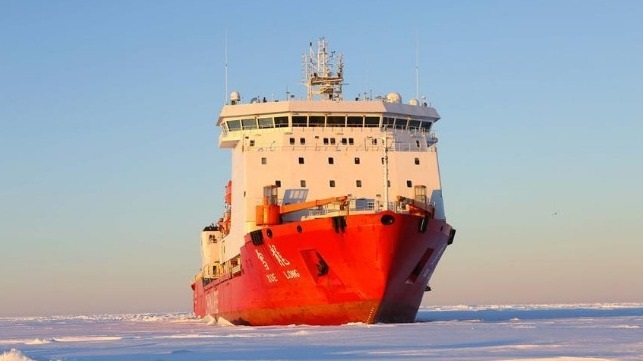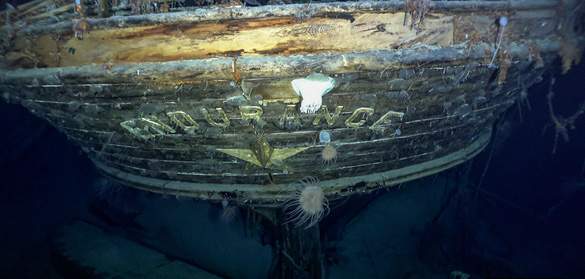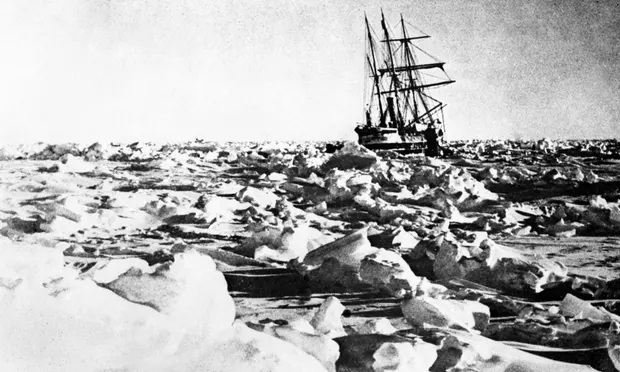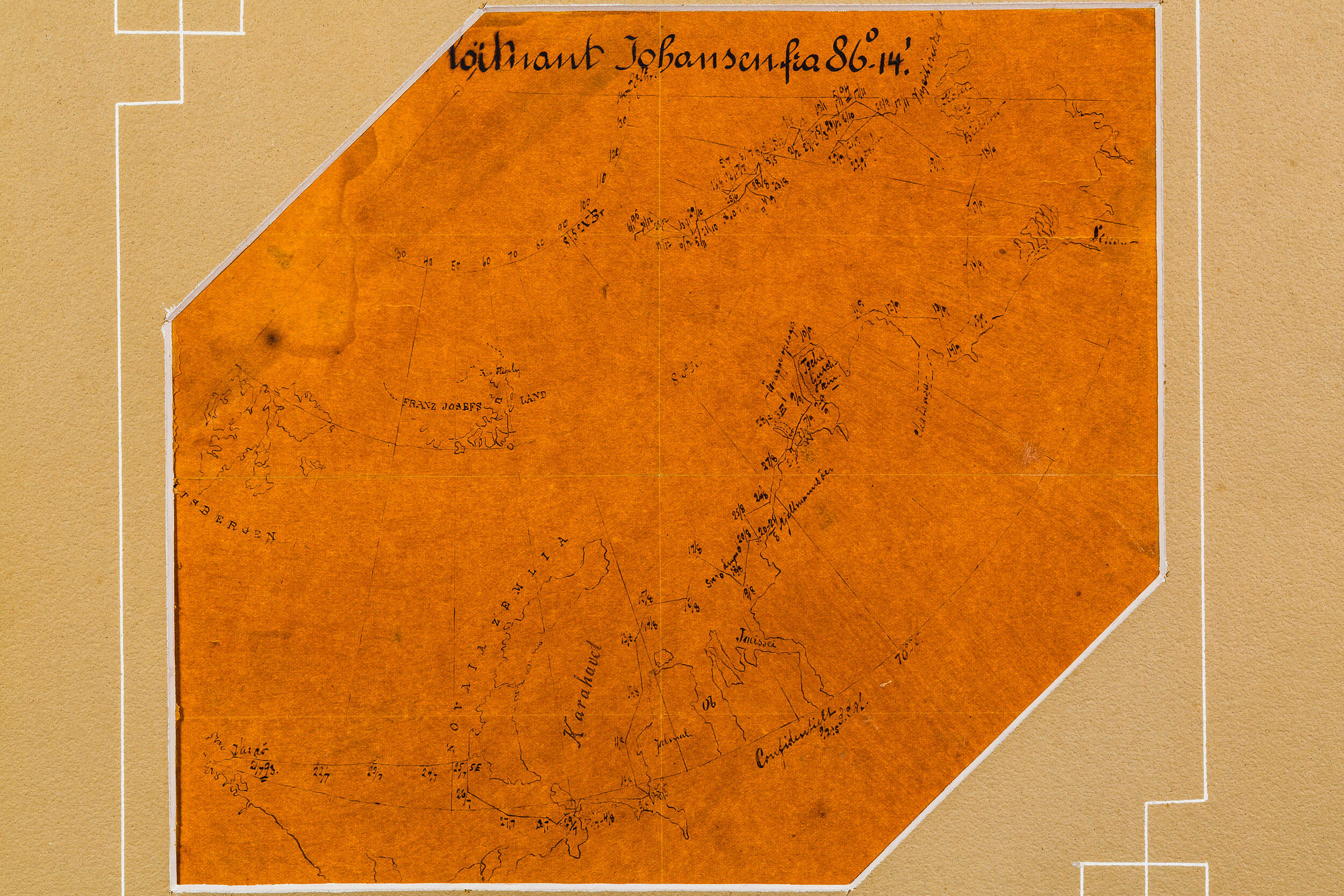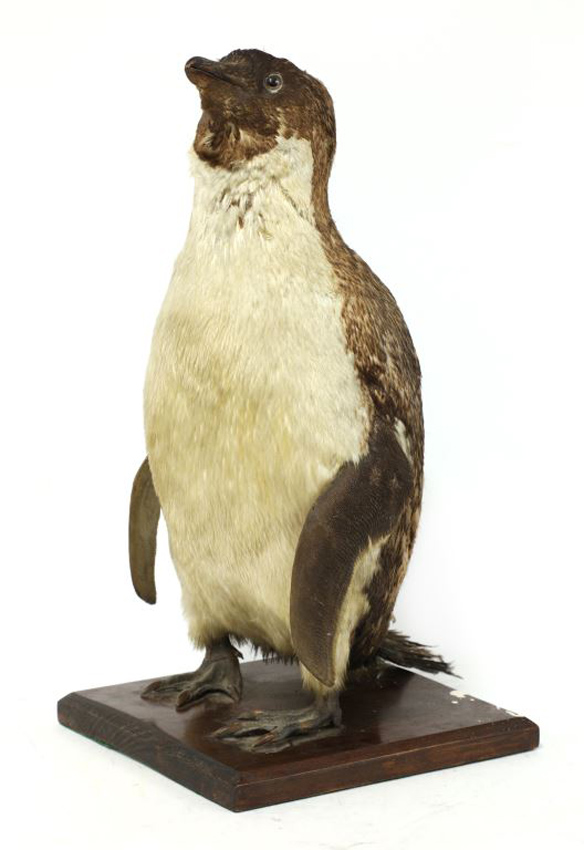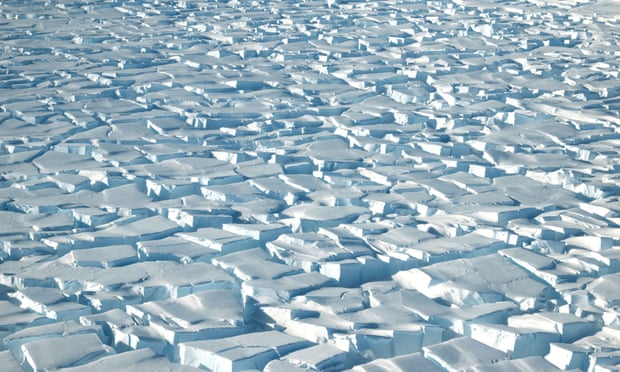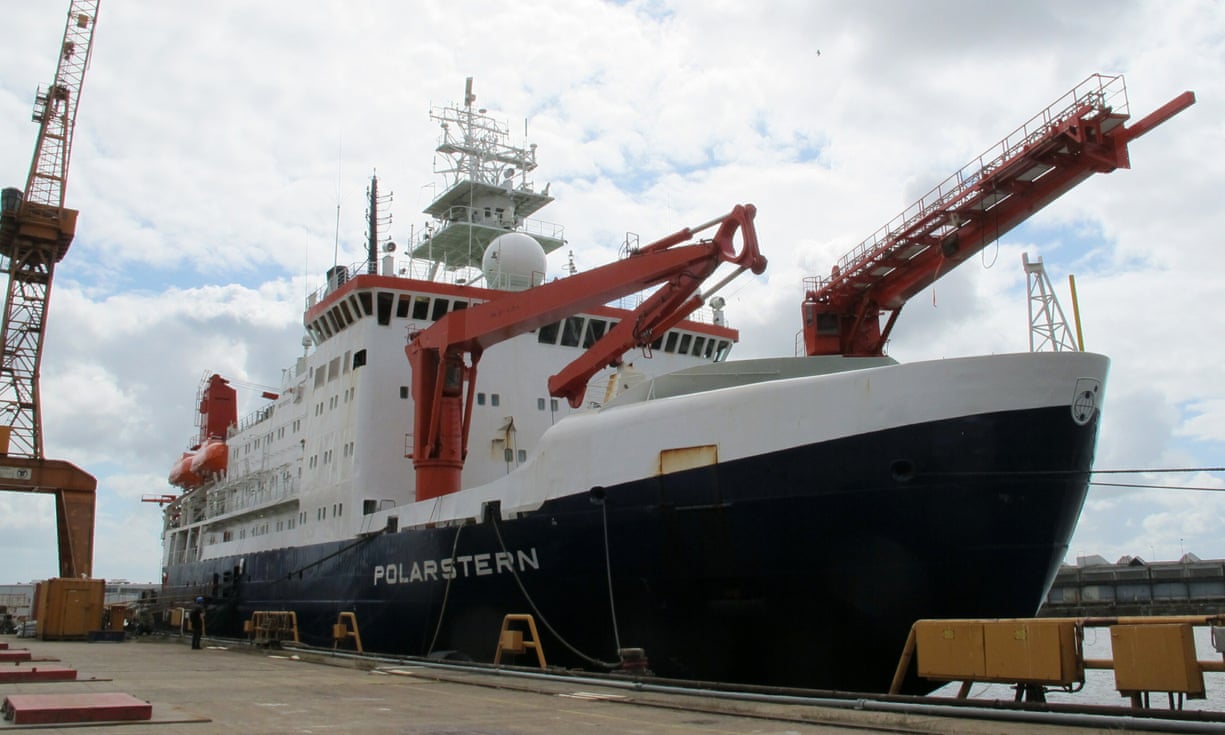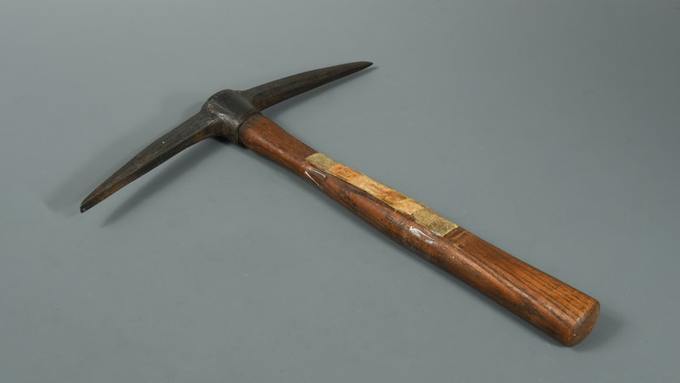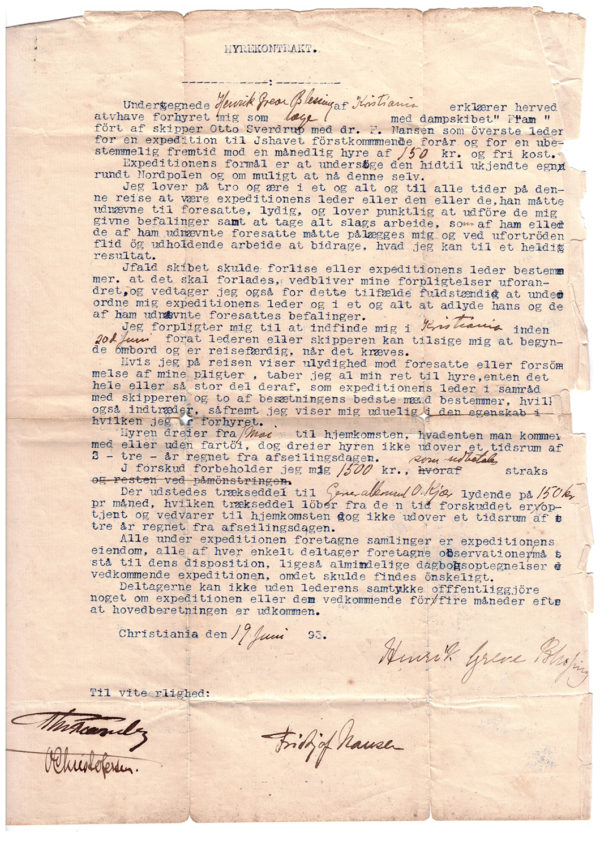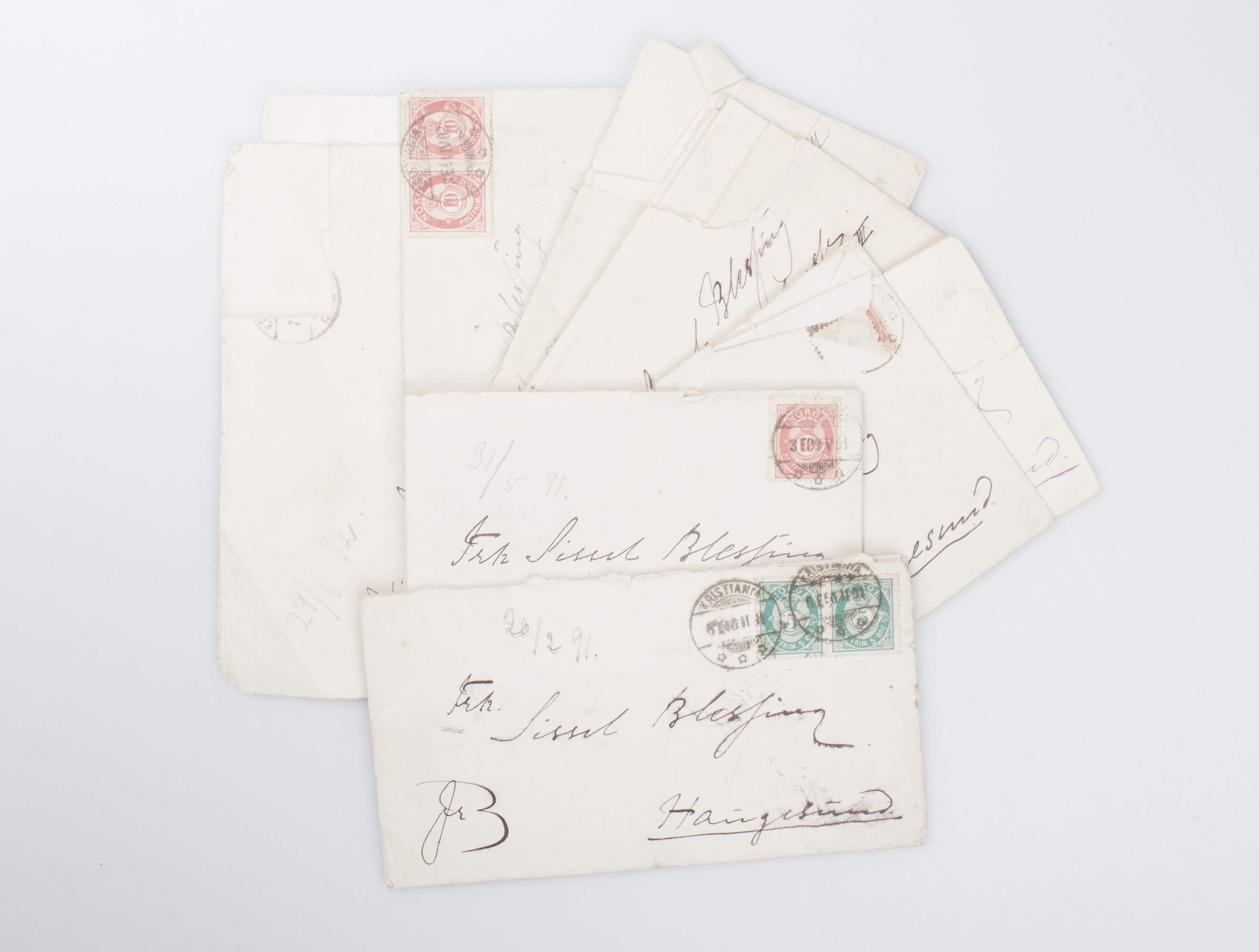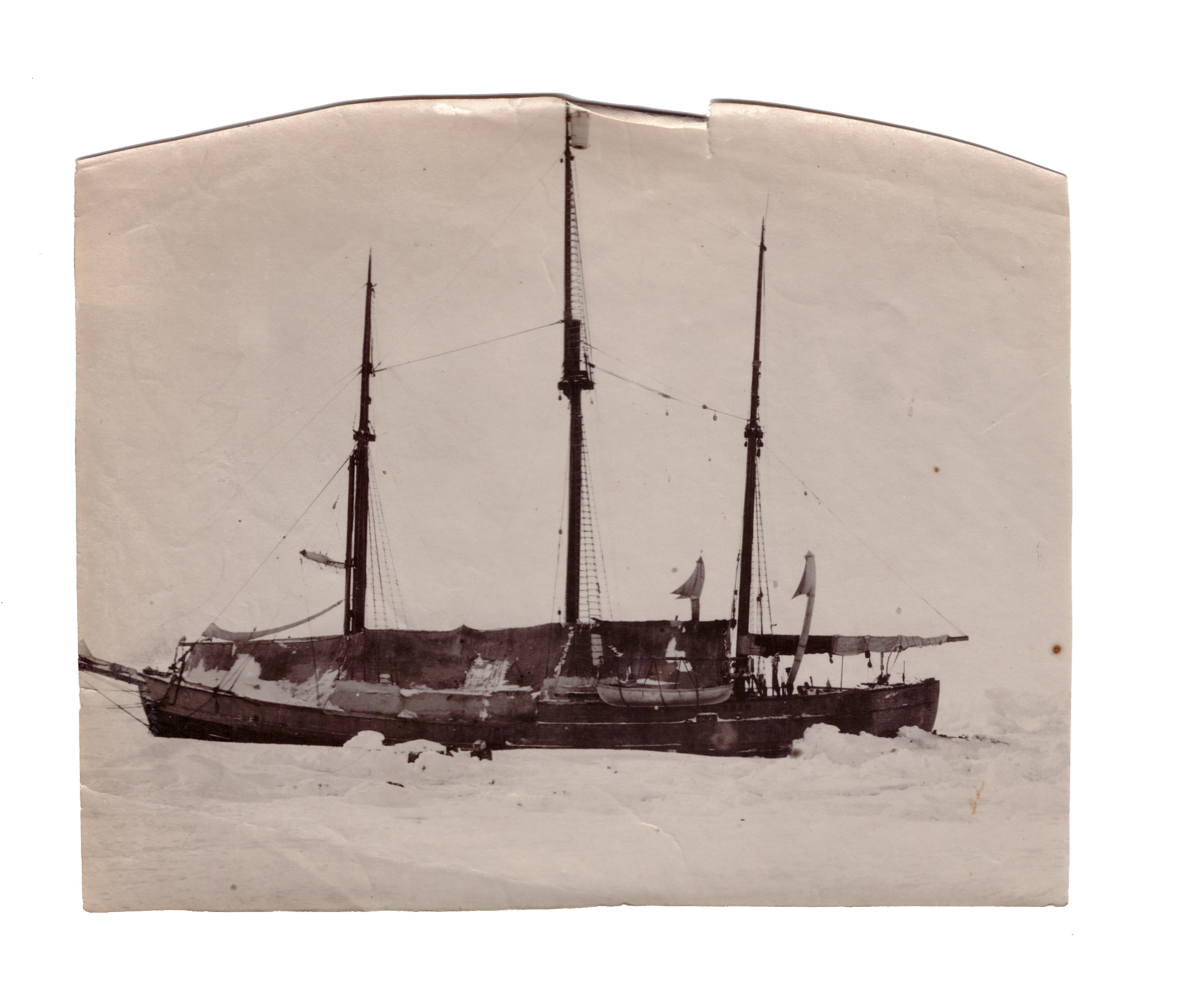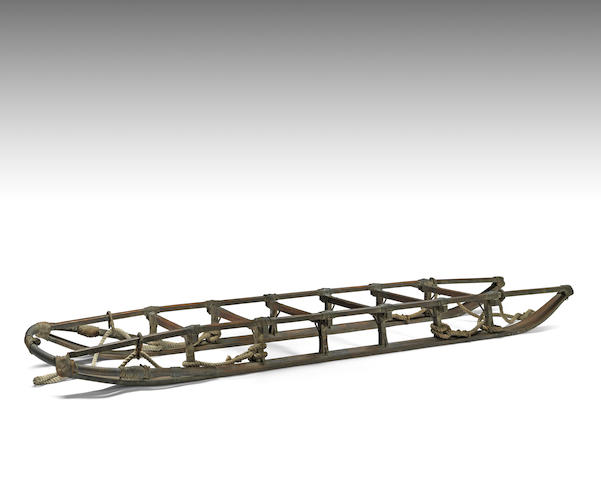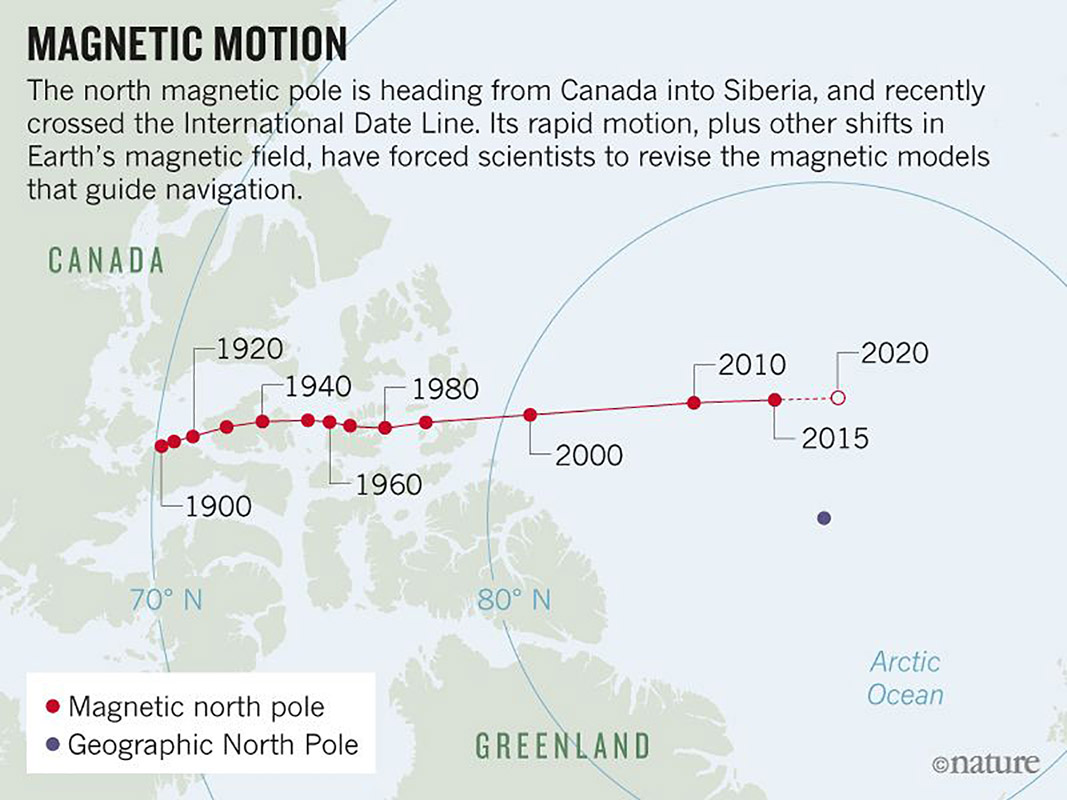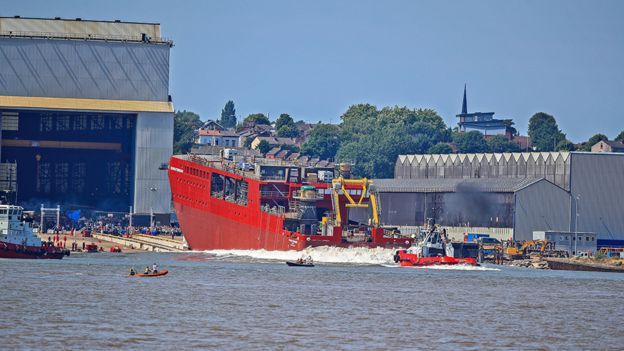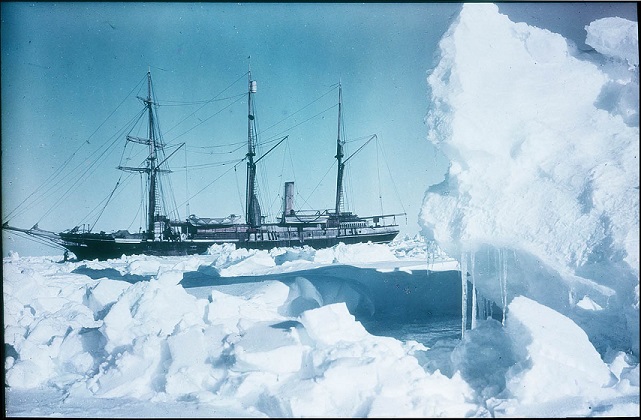Polar News
Endurance: Shackleton's lost ship is found in Antarctic 9 March 2022
Scientists have found and filmed one of the greatest ever undiscovered shipwrecks 107 years after it sank.
The Endurance, the lost vessel of Antarctic explorer Sir Ernest Shackleton, was found at the weekend at the bottom of the Weddell Sea. The ship was crushed by sea-ice and sank in 1915, forcing Shackleton and his men to make an astonishing escape on foot and in small boats. Video of the remains show Endurance to be in remarkable condition.Even though it has been sitting in 3km (10,000ft) of water for over a century, it looks just like it did on the November day it went down. Its timbers, although disrupted, are still very much together, and the name - Endurance - is clearly visible on the stern.
"Without any exaggeration this is the finest wooden shipwreck I have ever seen - by far," said marine archaeologist Mensun Bound, who is on the discovery expedition and has now fulfilled a dream ambition in his near 50-year career. It is upright, well proud of the seabed, intact, and in a brilliant state of preservation," he told BBC News.
The project to find the lost ship was mounted by the Falklands Maritime Heritage Trust (FMHT), using a South African icebreaker, Agulhas II, and equipped with remotely operated submersibles.
The mission's leader, the veteran polar geographer Dr John Shears, described the moment cameras landed on the ship's name as "jaw-dropping"."The discovery of the wreck is an incredible achievement," he added. "We have successfully completed the world's most difficult shipwreck search, battling constantly shifting sea-ice, blizzards, and temperatures dropping down to -18C. We have achieved what many people said was impossible. Endurance was spotted in the Weddell Sea at a depth of 3,008m.For over two weeks, the subs had combed a predefined search area, investigating various interesting targets, before finally uncovering the wreck site on Saturday - the 100th anniversary of Shackleton's funeral. The days since the discovery have been spent making a detailed photographic record of the timbers and surrounding debris field.
The wreck itself is a designated monument under the international Antarctic Treaty and must not be disturbed in any way. No physical artefacts have therefore been brought to the surface.The
ship looks much the same as when photographed for the last time by
Shackleton's filmmaker, Frank Hurley, in 1915. The masts are down, the
rigging is in a tangle, but the hull is broadly coherent. Some damage is
evident at the bow, presumably where the descending ship hit the
seabed. The anchors are present. The subs even spied some boots and
crockery. "You
can even see the ship's name - E N D U R A N C E - arced across its
stern directly below the taffrail (a hand rail near the stern). And
beneath, as bold as brass, is Polaris, the five-pointed star, after
which the ship was originally named," said Mensun Bound. "I
tell you, you would have to be made of stone not to feel a bit squishy
at the sight of that star and the name above," he added. "You
can see a porthole that is Shackleton's cabin. At that moment, you
really do feel the breath of the great man upon the back of your neck."
Shackleton's Endurance: The impossible search for the greatest shipwreck 4 February 2022
It is one of the most unreachable shipwrecks in the world.
The
frozen floes that squeezed, snapped and then swallowed his polar steam
yacht in the Weddell Sea between October and November 1915 smother its
grave and protect it from discovery. Even in this age of satellites and metal icebreakers, locating the Endurance has represented an impossible task.
Well, that's the fascination with Shackleton.
Shackleton's Imperial Trans-Antarctic Expedition lasted from 1914 to 1917. It was meant to make the first land crossing of Antarctica, but Endurance became trapped and then lost in that cruel sea-ice. The voyage became widely known for the amazing escape the explorer subsequently made with his men on foot and in boats. It's the stuff of legend. That's the appeal.
Mensun Bound asks: "What would it mean to find the Endurance?" He adds: "This is the greatest shipwreck hunt you can undertake. To locate it - it doesn't get better than that. So, by definition, my life would be downhill afterwards." The archaeologist is part of the Endurance22 project. Its hunt for Shackleton's missing ship is organised by the Falklands Maritime Heritage Trust, and departs from Cape Town this weekend.
Rare Playbill From HMS Resolute Arctic Expedition sold at Auction 19 July 2021
The theatre advert was printed on HMS Resolute, a ship that took part in the search for Sir John Franklin, with this playbill being from the Sir Edward Belcher expedition from 1853. In April 1854 the ship was abandoned after becoming trapped in the ice before being found adrift and taken to the United States by an American whaler. Part of its timbers were made into
a desk presented to Rutherford B Hayes, a former US President, in 1880
and is still in the White House's Oval office today.
During the winter months berthed at Dealy Island off the south shore of Melville Island, Canada, the men would put on performances complete with costumes and advertising playbills such as this one.
It reads: "This fashionable place of amusement will be opened for the season on Wednesday November 30 1853 when the Ships Companies will perform Shakespeare's much admired comedy, Taming the Shrew".
The playbill, which was bought in a charity shop, sold at Sworders Auctions in Essex for £3800.
Antarctic Expedition to Search for Shackleton's Ship 5 July 2021
The location of Sir Ernest Shackleton’s Endurance has been one of the great maritime mysteries since the ship became trapped in ice and sank in 1915. Finding this symbol of the “heroic age” of polar exploration at the bottom of the Weddell Sea was long thought impossible because of the harshness of the Antarctic environment – “the evil conditions”, as Shackleton described them.
Now a major scientific expedition is being planned with a mission to locate, survey and film the wreck.
Read more on the Guardian website!
Documentation map from Nansen's Fram Expedition 1894-96 1 June 2021
For those interested in polar history, Galleri Bygdøy in Oslo are offering a unique opportunity to buy a map from the First Fram expedition.
Drawn onboard the ship Fram, dated 9 FEBRUARY 1895, this manuscript map is a unique document from one of the most famous and important polar expeditions in world history. It is a map of the Polar Sea north of Siberia with the route of the expedition ship Fram. The position of the ship is plotted from the departure from Vardø 21 July 1893 – 6 January 1895. This is the first part of the The “Norwegian Polar Expedition 1893 – 1896” (called “The Fram Expedition”).According to provenance, supported by recent examination, this map “Lóitnant Johansen fra 86°.14’ “ has accompanied Fridtjof Nansen and Hjalmar Johansen on their second part of the expedition, a sledge journey towards the North Pole. Nansen and Johansen left the ship on 14 March 1895 and arrived in Vardø the 13 August 1896.
The map was drawn on board the Fram, probably on 9 February. At that point Fram had reached a latitude of 84°4’N. 86°14’ applied to the map is the latitude where Nansen and Johansen turned southwards. It was then the northernmost point any human being ever had been.The map was part of a collection of observations from the first part of the expedition copied to be carried by Nansen and Johansen on the sledge journey. As many tragic expeditions at this time had shown there was a risk, the Fram would not reach home. In this case and if the Nansen and Johansen survived, the two on the sledge journey would have at least some results to show. They also carried with them diaries, letters from the other expedition members and journals to make observations themselves.
More details of this map can be found in the excellent catalogue on Arctic Exploration that can be viewed online and downloaded from the Bygdøy Alle website.
Iceberg that became a social media star melts away 18 April 2021
The iceberg that was for a time the biggest in the world is no more.
A68 calved from the Larson C Ice Shelf
on the edge of the Antarctic Peninsula, and for a year it hardly moved.
But then it started to drift north with increasing speed, riding on
strong currents and winds.
Sledge and flag used on Shackleton’s South Pole expedition to stay in the UK 16 December 2020
A sledge and flag used on explorer Ernest Shackleton’s famed attempt to reach the South Pole in the early 1900s will be put on show in London and Cambridge.
The artefacts had earlier been sold at auction to an overseas buyer, leading to the British Government to impose an export ban on the artefacts due to their national importance.
The National Heritage Memorial Fund, which is funded by the Government, said on Wednesday that the items had been acquired for the nation after it awarded a £204,700 grant.
The sledge and flag were used on Shackleton’s British Antarctic Expedition, better known as Nimrod, which came within 100 miles of the South Pole before having to turn back. The 11ft sledge, one of four used to haul supplies and equipment, was brought back to England along with the flag by Dr Eric Marshall.
Penguin from Terra Nova expedition sells for £10 500 11 March 2020
Offered at Sworders auction house in Essex at their March 10-11 sale, the 18.5in (47cm) high stuffed and mounted bird had been given to the vendor’s family by the Terra Nova’s doctor. Consigned with expectations of £2000-3000, it sold at £10,500. The buyer was Canterbury Museum in Christchurch, New Zealand which will add the penguin to its diverse collection of Antarctic memorabilia and photographs.
Robert Falcon Scott’s doomed expedition, that arrived in Antarctica on January 4, 1911, hoped to be the first to reach the South Pole but it also had scientific objectives. The study of penguins, believed at the time to represent the evolutionary ‘missing link’ between birds and reptiles, was a key part of the expedition.
This Adélie specimen, possibly mounted by the London taxidermy firm Rowland Ward, was given to the vendor's great-grandmother Lady Porter and her husband, Surgeon Vice-Admiral Sir James Porter (1851-1935) by the Terra Nova’s doctor and parasitologist Edward Leicester Atkinson (1881-1928).
Centenary of "vital" Scott Polar Research Institute, Cambridge 12 January 2020
A scientific institution founded in the wake of the fatal Scott expedition to Antarctica is "vital" to "our understanding of the global climate". Captain Robert Falcon Scott and his four companions died returning from the South Pole in 1912. Money poured in after his last written words were revealed to be "for God's sake look after our people". Cambridge University founded the Scott Polar Research Institute 100 years ago using £6,000 of the £76,000 raised.
Captain Scott's failed attempt to lead the first team to reach the South Pole, only to be beaten by a Norwegian team, is well known. But the 1910-1913 Terra Nova expedition was also the largest-ever research mission to the pole, involving 12 scientists.Scott chose four companions to accompany him on the South Pole attempt - and several pounds of geological samples and scientific notebooks were found beside their bodies.
"Their observations are a century-old baseline against which contemporary change can be measured," said institute director Prof Julian Dowdeswell. The institute was the base for scientific expeditions to the Arctic and Antarctic in the 1930s and, during World War Two, it was the government's centre for research into cold weather warfare. After the war it became an international centre for research in a variety of fields related to the polar environment.
An Australian explorer just broke the record for the longest unsupported journey across the Antarctic. Completing a 3,300-mile trek across the Antarctic is no easy feat, and Australian Dr. Geoff Wilson did it with nothing but his supplies, a kite, skis, and sled. The route involved heavy winds, rugged terrain, chilling temperatures, and a race against the clock. He made history yesterday when he completed his journey. He travelled 128 miles (206 km) farther than the previous record. The grueling polar journey took the 49-year-old explorer 58 days.
The Guardian view on an Ice Sheet Collapse 7 January 2020
A scientific expedition to Thwaites glacier aims to provide vital information about the dangers of melting Antarctic ice. Thwaites glacier, a vast river of ice the size of Great Britain, holds enough frozen water that were it to collapse, the world’s oceans would rise by more than 60cm. Part of the West Antarctic ice sheet, it is one of the most unstable glaciers on the continent. Since the 1980's, Thwaites has lost 540bn tonnes of ice into the dark waters of the Amundsen Sea. This single glacier is responsible for 4% of global sea level rise.
The rate of Thwaites’s disintegration has alarmed scientists for good
reason. In a handful of decades it could retreat to the point that
collapse becomes inevitable and irreversible. That would lock us into a
future sea level rise of far more than half a metre or so. The reason is
simple: today, Thwaites is a brake on large inland glaciers. Lose
Thwaites, and those it holds back will follow. Over centuries perhaps,
they would add fully 2m to sea level rise. Read more here.
North Pole explorers complete epic trek 8 December 2019
Two explorers who trekked hundreds of miles at the North
Pole and were running out of food have reached safety after an epic journey
across the ice. South African Mike Horn and Norwegian Boerge Ousland covered
about 1,800km (1,120 miles) on treacherous drifting ice in the past couple of
months. Because of delays, they had been expected to run out of food by Friday. However, they managed to meet up with two Norwegians sent to
rescue them despite a local storm. Read more here.
Searching for Snow Hill, Antarctica's Most Elusive Island - National Geographic 21 October 2019
Antarctica is surreal — it’s a place where the air is cleaner, the water purer and the landscapes more untainted than imaginable. It’s where wildlife, avian and mammalian, are so fantastically naive about the threat of humans, they approach with the sincere inquisitiveness of children.
The Seventh Continent’s outrageous beauty is only matched by
this uncanniness, and the sense that maybe none of it is real. Having been
lucky enough to visit several times, I’ve never been able to shake the
peculiarity of the experience. I’m consistently left with a feeling that in a
world increasingly plagued by uniformity, perhaps this continent — and it alone
— deserves to be called unique. Read more here.
Climate scientists prepare for largest ever Arctic expedition 20 September 2019
Researchers from more than a dozen countries are preparing to launch the biggest and most complex expedition ever attempted in the central Arctic – a year-long journey through the ice they hope will improve the scientific models that underpin our understanding of climate change.
In the €140m (£123m) Mosaic expedition, 600 scientists from 19 countries including Germany, the US, Britain, France, Russia and China will work together in one of the most inhospitable regions of the planet.
“The Arctic is the epicentre of global climate change,” said Markus Rex of Germany’s Alfred Wegener Institute for Polar and Marine Research, who will lead the expedition. “At the same time the Arctic is the region of the planet where we understand the climate system least.”
Packed full of scientific equipment, the German icebreaker RV Polarstern will leave the port of Tromsø in northern Norway accompanied by a Russian vessel to search for a suitably large ice floe on which to anchor and set up base. As the days get shorter and the sea freezes around it, the Polarstern will slowly drift off on its own towards the North Pole while rotating teams of 100 scientists spend two months each conducting research on the ice.
Read the original news article at the Guardian.
An ice pick once owned by a member of Captain Scott's doomed Antarctic
expedition team has sold at auction for £22,000. The geologist, Frank Debenham,
took the ice pick on the Terra Nova British Antarctic Expedition of 1910 to
1913 and later gifted it to a friend, who in turn gave it to the owner who sold
it at auction in Cambridge. Its pre-sale estimate was £200 to £400 but the final
price excluding fees was £22,000 – 55 times its pre-sales estimate!
Debenham was part of Scott's expedition but injured his knee while playing football in the snow and did not go on to the South Pole with him and four comrades, who all died in 1912. Debenham later helped found the Scott Polar Research Institute in Cambridge as a memorial to Captain Scott and his four companions.
Diaries from the Fram Expedition up for auction 27 February 2019
Henrik Greve Blessing's diaries recording his experiences on the Fram expedition.
Blessing's registration of weight for the Crew of the Fram expedition.
Contract for Henrik Blessing to join the Fram expedition signed by Blessing, Nansen and Sverdrup.
Update: 6 March 2019 - The Blessing archive sold for NOK 600 000 (£52 500) to a Norwegian institution.
The archive of Henrik Greve Blessing, doctor on board Fram on the first expedition towards the North Pole 1893-1896 is up for auction in Oslo on March 9th.
Henrik Greve Blessing (1866-1916) was one of Nansen’s 12 chosen men for the first Fram-expedition, where he was hired as the doctor. The Blessing archive is extensive. Around 500 handwritten diary pages and extensive letter correspondence, before and after the expedition, gives a unique and detailed insight in one of the primary expeditions of the Heroic Era.
Read more here
The archive is estimated at between NOK 500 000 to NOK 750 000.
Shackleton's sledge smashes estimates 6 February 2019
A sledge from the first expedition to the Antarctic led by Ernest Shackleton sold for £143,750 in the Bonhams Travel and Exploration Sale today. Estimated at between £60,000-£100,000, the sledge was the subject of fierce competition from bidders in the room, on the phone and on the internet.
The sledge was used on the 1907-9 British Antarctic (Nimrod) Expedition by Eric Marshall – one of the four men, with Shackleton, Jameson Adams, and Frank Wild, to undertake the sledge march to the South Pole. Although they had to abandon the attempt, they reached within 100 geographical miles of the Pole – at the time, the furthest south ever travelled.
A detailed account of the expedition and the sledge's crucial role in it can be found here
Magnetic North Pole continues to accelerate 5 February 2019
At the start of the 20th century, the
magnetic North Pole sat on the edge of the Canadian Arctic, nearly as
far south as 70ºN. The intervening century has seen it gradually move
further north, crossing into the Arctic Ocean just before the turn of
the millennium. Over this time it has also been speeding up, from around
15 kilometres annually, to now more than 50 kilometres annually. At
present it sits closer to the geographic North Pole than at any point
since it was first measured by James Clark Ross back in June 1831, and it is rapidly progressing towards Russia.
The precise cause of this change is extremely complicated, triggered
by the unpredictable movements of vast streams of fast-moving liquid
iron within the planet’s outer core. Read more in the March 2019 edition of Geographical Magazine.
The Endurance sank in the Weddell Sea in 1915, after 10 months trapped by ice.
Antarctic explorers are to break their way through 75 miles of sea ice in an effort to reach the final resting place of Sir Ernest Shackleton’s ship, the Endurance, which sank to the bottom of the Weddell Sea in November 1915. Expedition leaders believe they have the best chance yet to find the wreckage of the lost vessel, which became trapped in sea ice for 10 months and eventually went down in two miles of water after the crushing forces of the surrounding ice breached its hull.
Researchers on the SA Agulhas II, a 13,700-tonne icebreaker, hope to
reach the wreck site later this week if the weather and sea conditions
do not turn. But that is not a given in the changeable Antarctic waters,
which have a knack for scuppering even the best-laid plans. Read more here.
US explorer Colin O'Brady completes first unaided solo trek of Antarctica 27 December 2018
Endurance athlete took 54 days to walk 932 miles across frozen continent, dragging a 170kg sled. An American explorer has made the first solo unsupported trek across Antarctica, an epic feat of endurance that took nearly two months and ended with an extraordinary sprint.
He had spent 54 days in conditions that pushed his body to its limit,
battling hunger, cold and solitude, often trekking almost blind through
driving snow, struggling over treacherous terrain and pulling weeks’
worth of supplies on a sled. The total journey was 932 miles.
Arctic explorer's ship returns home after 100 years 8 August 2018
Norwegian explorer Roald Amundsen famously beat Britain's Captain Robert Scott to the South Pole in 1911, becoming the first man to reach it. But his later attempt for the North Pole was not as easy - and the Maud, his ship for that trip, has finally come home.
She
spent years locked in Arctic ice - and when Amundsen ran into financial
difficulties, he sold it off. It became a floating warehouse and radio
station under its new owners - before sinking off Canada in the 1930s. Raised from its watery grave in 2016, it has now been towed across the Atlantic to its Norwegian home - 100 years after it left.
Sir David Attenborough launches 'Boaty' polar ship 14 July 2018
Sir David Attenborough has launched the 10,000-tonne hull of the UK's newest polar ship - named after him - into the River Mersey. The broadcaster pushed the button, sending the hull sliding out from the Cammell Laird yard in Birkenhead, into the water where building will continue.
An official handover of the finished ship is scheduled for the end of
the year. It is at this point that the RRS Sir David Attenborough can
begin sea trials, and go on its maiden expeditions to the Arctic and the
Antarctic.
Stonington Diaries, Base E, Antarctica 1 May 2018
Read the daily updates from the Antarctic Heritage Trust conservation team at
Stonington as well as 'live' historical entries from the men who were
stationed there in the 60s. We hope you enjoy the story of this unique
and remarkable Antarctic heritage site!
http://www.ukaht.org/discover/conservation/stonington-diaries/

Polar Explorer Shackleton's Lost Ship Could Be Hidden Under Antarctic Ice 18 April 2018
Julian Dowdeswell, director of the Scott Polar Research Institute at the University of Cambridge in the U.Kwill lead an international scientific expedition to the Weddell Sea on board a South African polar research ship, the Agulhas II, during the Antarctic summer in January and February of next year.
The main scientific purpose of the expedition will be to explore the
edge of the Larsen C ice shelf adjacent to the Weddell Sea, which was exposed in July 2017 by the separation of a giant iceberg known as A-68.
But Dowdeswell hopes the two high-tech AUVs can also search for the
wreck of Shackleton's Endurance, which was recorded as sinking about 215
miles (350 kilometers) from the edge of the ice shelf, in a part of the
Weddell Sea almost always covered by sea ice that's several meters
thick.
It's a boy: Sex of first UK polar bear cub in 25 years revealed! 16 April 2018
The UK's first polar bear cub to be born in 25 years is male. Born at the Highland Wildlife Park, near Kincraig, in December, the sex of the cub was confirmed when it was given a health check earlier on Monday. Staff at the Royal Zoological Society of Scotland park are preparing a list of "suitable names" for the public to choose from for the cub. The park's Una Richardson, said: "It was very exciting to find out we have a little boy."

China has begun building its first polar expedition cruise ship, state news agency Xinhua reported Saturday, as the country looks to shipping lanes opened up by global warming to extend President Xi Jinping’s Belt and Road initiative to the Arctic. Construction of the 104.4-meter vessel, equipped with an advanced electric propulsion and control system for navigating sea ice, was expected to be completed by August 2019, Xinhua reported.
China released its first official Arctic policy white paper in January, in which it revealed plans to encourage companies to build infrastructure and conduct commercial trial voyages with the goal of building a “Polar Silk Road.”
